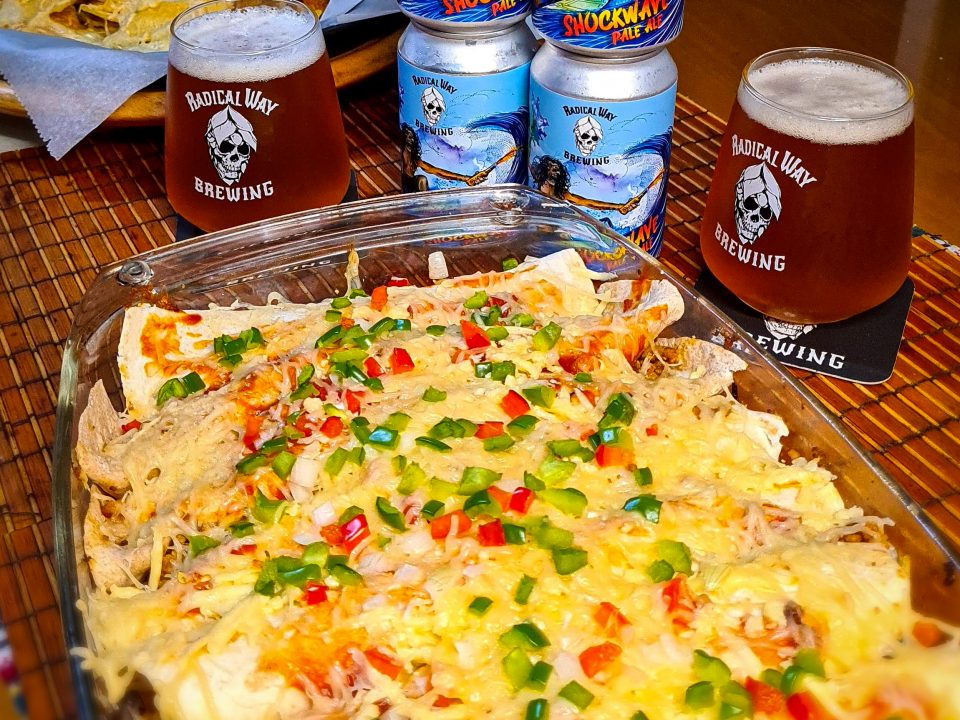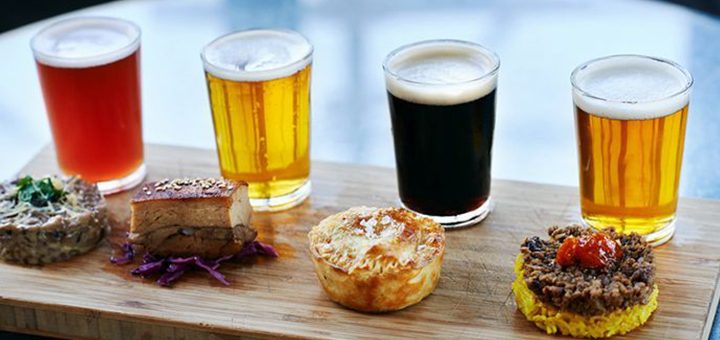Don’t be afraid of the dark

Craft Beer Storage
June 4, 2021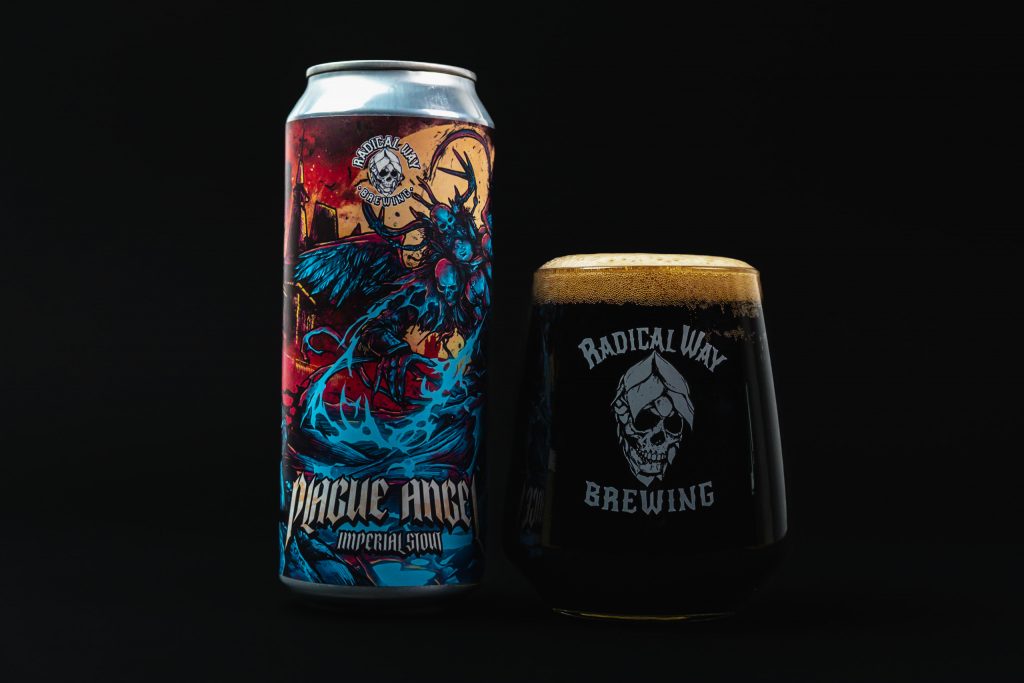
Our first attempt at a dark beer is an Imperial porter that goes by the name of Ravenous Lunacy. It also marks our first collab brew with our Athens-based brothers Alea Brewing Co. Many misconceptions surround dark beers because of their color, and in this blog post we want to show to you that there’s more to them than meets the eye.
For most people, dark beers are heavy-bodied, strong, rich-tasting and are only suitable for cold weather. Many might even believe that dark beers are reserved for drinkers with a strong stomach and a seasoned palette. This is far from the truth though: dark-colored beers come in many styles, tastes and ABV levels, just like all other beers.
By the end of the post, you’ll hopefully be convinced that by ignoring them you are missing out on a whole world of interesting and ever-evolving flavors!
Where do dark beers get their color from?
Beers owe their variety in color to malt, one of the four main ingredients used in the brewing process. When grains such as barley, rye and wheat are malted, the seeds are first soaked in water, which kick-starts germination and releases sugars from the starches. This process is halted by heating and/or drying the seeds (kilning).
During kilning, two processes work hand-in-hand. First we have the Maillard or browning reaction, where the released sugars interact with amino-acids. The further the Maillard reaction is allowed to continue, the roastier the produced flavors become. Secondly we have caramelization, when sugars are subjected to high temperatures, imparting flavors such as caramel, burnt sugar and toffee to the malts. The longer the malts are caramelized, the darker they’ll get.
The temperature and duration of kilning will therefore determine the resulting color of the beer, as well as a significant amount of its flavor. More kilning will lead to darker colors and roastier, stronger flavors such as coffee, chocolate and smokey/burnt notes.
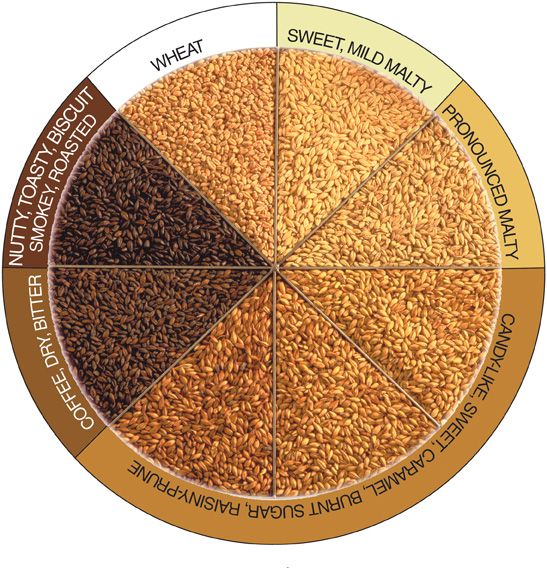
Misconceptions
- “Dark beers are only suitable for cold weather”
There’s no doubt that cold weather calls for the comfort of a malt-forward, roasty beer with chocolate or coffee notes, something that many dark beers are perfect for. In contrast, people tend to go for lighter, more refreshing flavors associated with pale ales or lagers during warmer months.
However, this is a disservice to dark beers such as black lagers and black IPAs, which can be equally as refreshing. The base malts of modern dark beers mostly consist of light malts, with darker, roasted malts added for their coloring and flavor effect.
- “Dark beers are higher in alcohol and calories than lighter beers”
The unique and often intense flavors of dark beers can make people assume that they will naturally have a high alcohol content. However, the amount of alcohol in a beer is determined by the fermentable sugars produced from the amount of malt used. This is unrelated to the amount of roasting (and by extension the color) of the malt which was used. You could think of the choice of the amount of malt roasting as food coloring, which can give darker colors to a beer with no effect on its ABV.
Similarly, color has nothing to do with the calories contained in beer: again, that (mostly) has to do with the amount of sugar in the beer, which is directly related to the beer’s alcohol content. All this ties back to the amount and not the color of the malt used!
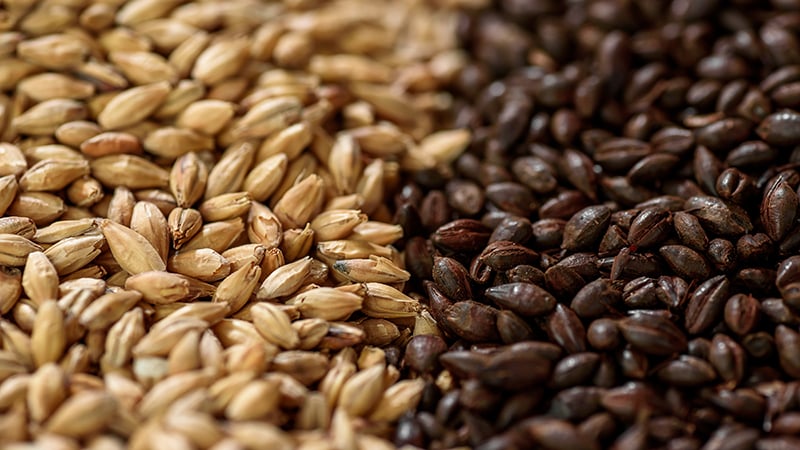
- “Dark beer has a harsher and stronger flavor than lighter beers”
As we’ve seen, brewers have a wealth of options for the malts they use. Heavily roasted malts will impart dark colors and are responsible for flavors ranging from caramel to smokey. By playing with the different malts, boil length, pH level and other ingredients, there is an endless combination of possible flavors . What’s important to keep in mind is that color has no flavor.
Depending on the brewer’s intentions and recipe development, some dark beers can have a more robust and bitter character (like your black coffee).
At the same time, you can find many smooth, balanced dark beers as well as dark beers with sweet tastes resembling your favorite desserts. The recent prevalence of pastry stouts, characterized by their sweetness, full and creamy mouthfeel is a great example of the versatility of flavors that dark beers can have.
- “Dark beer should be served warmer compared to lighter-coloured styles”
That again depends on the type of beer and not color. Allowing your stout some time to get to a warmer temperature after pouring will bring out a lot more character. You’ll be able to taste the depth of the malt sweetness and capture aromas of chocolate, coffee, dark fruit, or caramel you might otherwise have missed.
In general, light-bodied, low-alcohol dark beers will taste better when served cold whereas rich-bodied, high-alcohol beers benefit more from reaching a slightly warmer temperature.
Conclusion
Dark beer is not an all-encompassing description and a large variety of styles falls under this umbrella. There’s a dark beer to match every craft beer drinker’s tastes.
Due to the warmer climate of Greece and Cyprus and the various misconceptions we have discussed, dark beers are not as popular here as in colder countries. The recent developments and innovations from many craft breweries have produced dark beers with an incredible range of flavors and aromas. If you haven’t had a dark craft beer lately it’s time to give one a try, whether it’s a malty, dark colored lager or a creamy, delicious pastry stout.
Most importantly, don’t be afraid of the dark!



